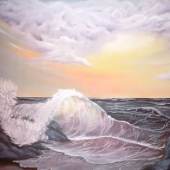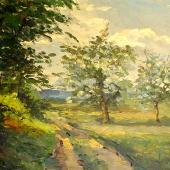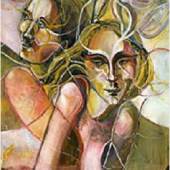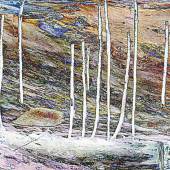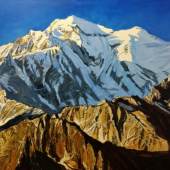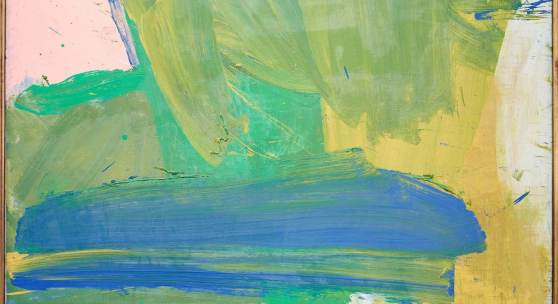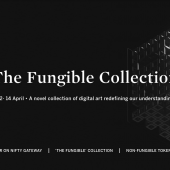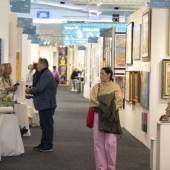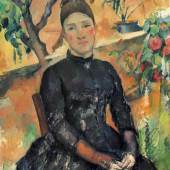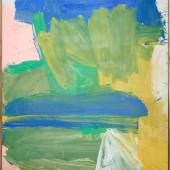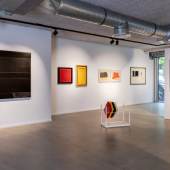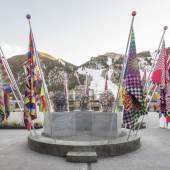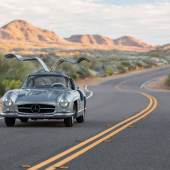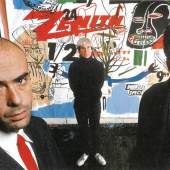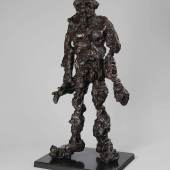Sotheby’s
How Italy Transformed Willem de Kooning
-
Ausstellung16.04.2024 - 15.09.2024
Two stays in Italy inspired Willem de Kooning to bold experiments in his art, a new exhibition in Venice reveals.
W hen Willem de Kooning visited Italy in 1959 it was the first time he had left the US since arriving in Virginia as a 22-year-old Dutch stowaway in 1926. He set foot in Rome as a “great American painter”, a linchpin of Abstract Expressionism whose global reputation and influence was then at its height. De Kooning was in his pomp following a sell-out critically acclaimed show earlier that year at Sidney Janis Gallery in New York, featuring his Abstract Parkway Landscapes – magnificent, boldly coloured paintings informed by his car journeys out of Manhattan to Long Island.
A few of the Parkway paintings are among the opening highlights of Willem De Kooning and Italy, an exhibition at the Gallerie dell’Accademia in Venice coinciding with the 60th Venice Biennale. With 75 works, it is the largest ever De Kooning show in Italy and focuses on that first trip, a second Italian stay 10 years later, and their subsequent influence on his work. Willem de Kooning’s Clamdigger, 1972. Credit: © 2024 The Willem de Kooning Foundation, SIAE
Central to the show are the black and white drawings that he made in the Italian capital in 1959, known as the Romes, as well as three of the so-called Pastoral Landscapes – bold developments of the Parkway series that De Kooning made with Italy on his mind from 1960, after he’d returned to New York. This trio of 2m-tall paintings – Door to the River, A Tree in Naples and Villa Borghese – are on loan from the Whitney Museum, MoMA and the Guggenheim, respectively, and reflect an artist riding the crest of a wave.
De Kooning had arrived in Rome “without a plan and, stayed for a few months”, says Mario Codognato, who is co-curating the Venice show with Gary Garrels. “It was typical, in a way… his life and movements are very much connected to his sentimental life.” On arrival, Afro Basaldella, an Italian artist he had known in New York, “gave him his studio, a small penthouse on the via Margutta”. There was little light and space – an important factor in the work De Kooning made. “He could only have done relatively small works on paper,” says Codognato.
The Romes are remarkable in their intensity. Codognato suggests their austere black and white forms connect with “the artistic zeitgeist” of Italian artists he probably met and maybe visited in their studios. The zeitgeist in the late 1950s was in the juxtaposition of black and white. He likens the way De Kooning turned and tore the paper in the Romes, lending them “an almost three-dimensional quality”, to Alberto Burri’s experiments with sheet metal.
De Kooning’s return to Italy in 1969 was marked by a fully fledged experiment with sculpture. Initially invited to the Spoleto festival in Umbria, he stayed there but travelled regularly back to Rome where he had another chance encounter, this time with Herzl Emanuel, a sculptor he had met in the 1930s in the US. Emanuel had a studio in Rome with the facilities to make bronze sculptures, so an opportunistic De Kooning began his first forays into clay.
“These anthropomorphic shapes reflect the way he represented the human body when he was painting,” says Codognato. The Venice exhibition includes several important examples, with the aim of showing sculpture’s key role in his oeuvre. Codognato suggests these works were also informed by the fractious political and cultural atmosphere of the time, including the avant-garde theatre De Kooning had seen at Spoleto. “In 1969 everybody was trying to break the barrier between art and life, and the body was the main instrument to do that,” the curator explains. “In his own style, it was something he had always done.”
Willem de Kooning and Italy, Gallerie dell’Accademia, Venice, 16 April–15 September
-
12.04.2021 - 14.04.2021By Pak • 12- 14 April • A novel collection of digital art redefining our understanding...
-
20.04.2022ARTEXPO NEW YORK CELEBRATES ITS 45TH ANNUAL EDITION WITH A RENAISSANCE IN CONTEMPORARY AND FINE...
-
23.05.2018NEW YORK, 16 May 2018 – Today, Sotheby’s is honored to unveil the full contents of A...
-
Paul Cezanne besucht immer wieder das Musée du Louvre und kopiert Gemälde - vor allem...
-
16.04.2024 - 15.09.2024Two stays in Italy inspired Willem de Kooning to bold experiments in his art, a new exhibition in...
-
17.04.2024 - 17.05.2024Marking 50 years of Sotheby's in the Belgian capital, an esoteric selling exhibition is on...
-
20.04.2024 - 24.11.2024Jeffrey Gibson on Representing the United States and Himself By Melissa Smith | Feb 16, 2024 From...
-
13.05.2024 - 15.05.2024Sotheby’s Sealed is thrilled to present this spectacular Mercedes-Benz 300 SL Alloy...
-
14.05.2024Warhol & Basquiat’s Collaboration Series Masterwork To Highlight Sotheby’s...
-
16.04.2024 - 15.09.2024
.
